One World Mural Series

The Short North Alliance and 10 partner galleries and art institutions present the seventh rendition of the highly popular Short North Mural Series titled One World, which showcases the diversity of global artists and their experiences.
This iteration builds upon the popular Unconventional (2019-Present), I, Too, Sing America: The Harlem Renaissance at 100 (2018-2020), Six in the Short North (2017-2019), BLANK SPACES (2015-2017), Viewpoints: Murals by Young Professional Working Artists (2013-15), and 10x10x10 (2012-13) mural series.
One World is a project of the Short North Alliance and is made possible with support from the Greater Columbus Arts Council, the Ohio Arts Council, and the Short North Alliance Art Fund.

The murals are installed on the exterior brick facades of 10 buildings along High Street in the Short North Arts District. They consist of high resolution images of art works that are printed on vinyl and heat-adhered to buildings. The process results in a work of art that looks painted on the building.
The Short North Mural Series has become one of the most anticipated and celebrated projects in the Short North Arts District. Representing an incredible community-wide collaboration among the district’s art galleries and many of our community’s leading arts institutions, this set of murals focus on an individual author’s feelings about their city.
Navigate the murals and the art of the Short North in person using the Short North Arts District One World Guide.
See the full Gallery & Art Guide Here
ONE WORLD MURALS
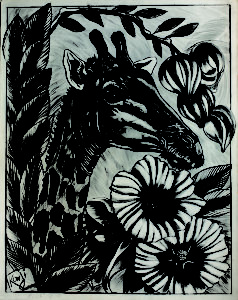 Satisfied
Satisfied
Karji Jimi Weah
Sean Christopher Gallery Ohio – @seanchristophergalleryohio
Installed at 1359 N. High St.
Karji Jimi Weah is a Columbus-based visual artist and reggae musician and native of Liberia. Karji means “the world doesn’t know what is good nor what is bad” and Weah means “King.” “A lover of silver is not satisfied with silver nor is the lover of wealth with income. As for me, I am satisfied with what little I have.”
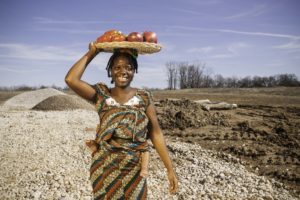 THE TOIL OF A GHANAIAN MOTHER
THE TOIL OF A GHANAIAN MOTHER
Edmund Boateng – @kboateng_street
Sharon Weiss Gallery – @sharonweissgallery
Installed at 1288 N. High St.
In Ghana, about 60% of the women go through a stage where they carry items in a pan or basket to sell either in the markets or neighborhoods. Boateng has personally bought items from them, mostly the easiest convenient way of getting food items. “My mom, at some point, had to go through the same process selling all different kind of stuff. And yes, you will see them walk miles with a baby at their back, which three of my siblings and myself have been carried at her back while walking miles to sell whatever she had in her pan/basket. This photo is depicts exactly what most Street Hawkers go through to feed themselves and their families.”
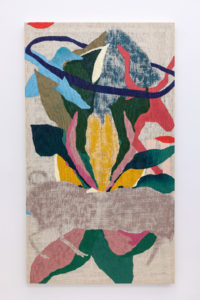 Stray Delight
Stray Delight
Kaveri Raina
Hammond Harkins Galleries – @hammond_harkins
Installed at 1020 N. High St.
Kaveri Raina is an abstract artist, born in India, raised in Ohio, and educated in Maryland.
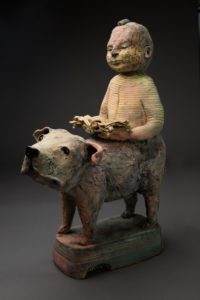 A Little Wrong
A Little Wrong
Julie Byrne – @juliemakesstuff
(Not) Sheep Gallery – @notsheepgallery
Installed at 15 E. Second St.
Clay provides the artist with a chance to make anything, capture any detail, and speak in any voice to convey an idea. Its flexibility and strength is god-like empowering (from dust, and unto dust) and do-overs are a matter of determination. “My work has evolved from stories, my own and stories and those I have borrowed from others. Over the years I have built a cast of characters who do my bidding. The job of creating a sculpture as story is, for me partly, my job, and partly the work of the finished piece.”
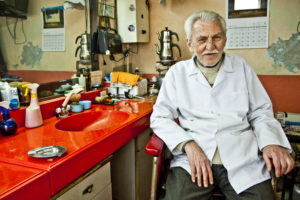 BARBERSHOP…Istanbul
BARBERSHOP…Istanbul
Rainer Ziehm – @redbritain
Sarah Gormley Gallery – @sarahgormleygallery
Installed at 1259 N. High St.
In the alleys of old Istanbul, the barbershops are the bastions of traditional male society, the place where men gather to discuss politics, share neighborhood gossip, play dominoes; a place to escape their daily routines. The barber is not only the barber, but the friend and confidant.
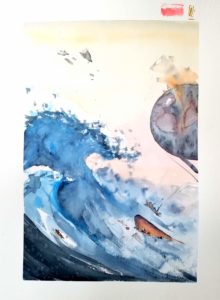 The Tohoku Great Wave
The Tohoku Great Wave
Antonio González García – @watercolorbyantonio
Studios on High Gallery – @studiosonhigh
Installed at 790 N. High St.
The Tohoku Great Wave is a painting inspired by the tsunami which struck the Fukushima nuclear power plant in Japan in 2011. Documentary films created after the disaster noted previous studies of tsunami risk and protection performed before the design and building of the nuclear power plant were ignored. The wave itself echoes the work of Japanese woodblock print artist Hokusai.
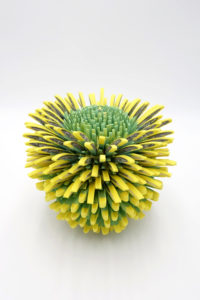 Pua 1
Pua 1
Zemer Peled – @zemerpeled
Sherrie Gallerie – @sherriegallerie
Installed at 772 N. High St.
Zemer Peled’s work examines the beauty and brutality of the natural world. Her sculptural language is formed by her surrounding landscapes and nature, engaging with themes of memory, identity, and place. Her works are formed from thousands of porcelain shards constructed into large-scale/small-scale sculptures and installations.
 The Colosseum
The Colosseum
Robie Benve – @robiebenve
Marcia Evans Gallery – @marciaevansgallery
Installed at 685 N. High St.
The Colosseum pictures a trademark monument of Italy, a country usually known for its culture, art, and food, and recently on the news for being badly struck by the 2020 pandemic, as most of the world. The artist, a native Italian, used colorful abstract patterns and marks to create an ageless and vibrant composition that powerfully celebrates the history and the memories associated with the famous 2000-year-old arena.
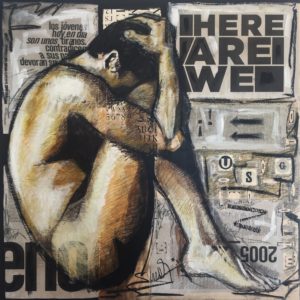 Here We Are
Here We Are
Alejandra Zanetta – @alezanetta
Brandt-Roberts Galleries – @brgalleries
Installed at 642 N. High St.
Argentinian artist Zanetta’s piece alludes to the generational rift that she feels exists today. “While we, the ‘adults,’ the ‘parents,’ think we are always right, that we made the right choices, in reality we are leaving the new generation a complicated world, a world which is threatened by multiple challenges that we did not properly address: climate change, social inequality, and mass migration.” The figure holding his head in his hands alludes to the mythological figure Atlas, who has the weight of the world on his shoulders. The title Here We Are alludes both to the dire situation in which we find ourselves and to the will of this new generation to “contradict” their parents and to take stock of the situation.

